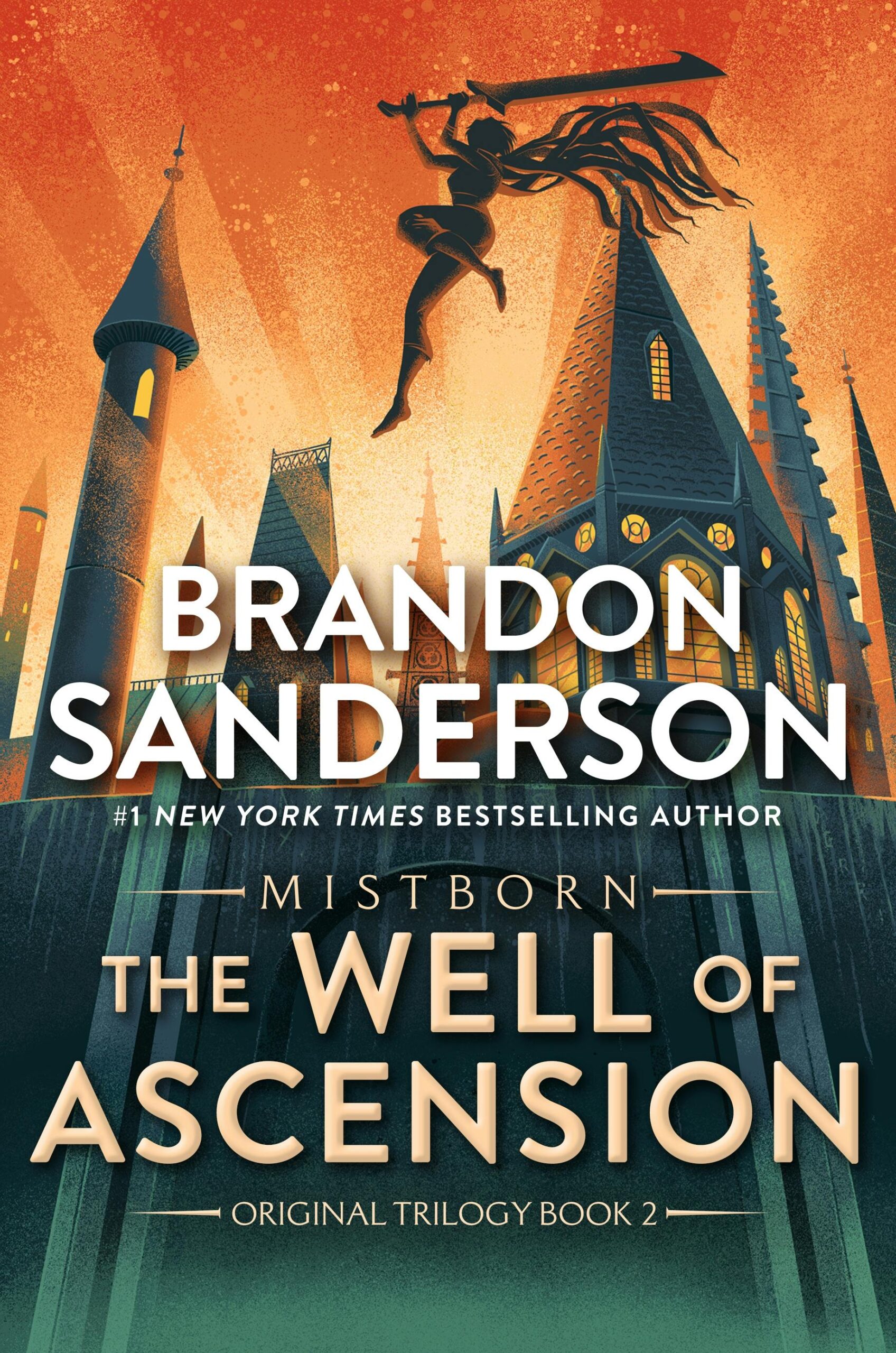
The Well of Ascension
35
by Sanderson, BrandonVin prepares for an important event, donning a maroon gown that evokes memories of her past as both a noblewoman and a thief. The dress symbolizes her evolving identity, blending confidence in her Mistborn abilities with her role as the slayer of the Lord Ruler and beloved of King Elend. As she admires herself in the mirror, she contemplates the possibility of embracing both her past and present selves, feeling a rare sense of beauty and self-assurance. Tindwyl, her Terris mentor, compliments her appearance, noting that Vin’s natural grace eliminates the need for jewelry.
Tindwyl and Vin discuss Elend’s growth as a leader, with the Terriswoman explaining that while he still has much to learn, he is beginning to rely on his own experiences rather than external guidance. Vin reflects on Elend’s transformation, recognizing the challenges he faces in becoming the ruler he aspires to be. Tindwyl reassures her that Elend would have found his path regardless, emphasizing the importance of personal growth through adversity. Vin, in turn, acknowledges her own need to evolve, not just for Elend’s sake but for herself, as she steps into her new role.
Meanwhile, Elend prepares for a diplomatic dinner with Cett, taking precautions by assembling a sizable escort of soldiers and trusted allies like Ham and Spook. Breeze, however, expresses reluctance to attend, prompting Elend to reconsider his expectations of his companions. The scene highlights the tension and uncertainty surrounding the dinner, as Elend balances the need for security with the demands of diplomacy. His interactions with Breeze reveal the complexities of leadership and the varying levels of commitment among his team.
The chapter juxtaposes Vin’s personal introspection with Elend’s strategic preparations, underscoring their parallel journeys of self-discovery and leadership. Vin’s embrace of her identity and Elend’s cautious approach to diplomacy reflect their shared determination to navigate the challenges of their roles. The narrative sets the stage for the upcoming dinner, blending themes of personal growth, political maneuvering, and the enduring bond between Vin and Elend.
FAQs
1. How does Vin’s maroon gown symbolize her internal conflict and growth in this chapter?
Answer:
The maroon gown represents Vin’s struggle to reconcile her different identities—skaa thief, noblewoman impersonator, and Mistborn. The dress is described as “untraditional but not unfashionable,” mirroring Vin’s unconventional position in society. Its alterations allow greater freedom of movement, paralleling how Vin seeks to move more comfortably between her roles. The passage reveals her desire to “be herself”—a confident figure who embraces both her power and femininity. This symbolizes her ongoing character development, as she contemplates unifying her fractured self-perception into a cohesive identity that serves both Elend and her own needs.2. What does Tindwyl’s assessment of Elend’s progress reveal about leadership development?
Answer:
Tindwyl’s commentary provides key insights about leadership as an experiential rather than purely instructional process. While she acknowledges Elend’s growth, she clarifies he’s far from ideal—yet has reached a critical juncture where “he can rely only so much upon the words of others.” This underscores that true leadership requires personal experience and self-directed learning, not just theoretical knowledge. Her metaphor—”a man can only stumble for so long before he either falls or stands up straight”—emphasizes that leadership emerges through confronting challenges directly, suggesting Elend is transitioning from academic idealism to practical statesmanship.3. Analyze the contrasting security preparations for this dinner compared to previous engagements. What does this reveal about changing political dynamics?
Answer:
The extensive security measures—200 soldiers, Ham as armed bodyguard, Spook as coachman—highlight escalating tensions and Elend’s evolving leadership approach. Unlike earlier informal meetings, this reflects recognition of Cett as a genuine threat, demonstrating Elend’s growing political acumen under Tindwyl’s tutelage. Breeze’s reluctance to attend further emphasizes the danger, creating a stark contrast with Vin’s ball-like preparations. This juxtaposition of martial readiness and diplomatic pageantry illustrates the complex dual nature of their mission—maintaining noble appearances while acknowledging the ruthless realities of their besieged position.4. How does Tindwyl’s philosophy about self-actualization apply to both Vin and Elend in this chapter?
Answer:
Tindwyl’s guidance to both characters emphasizes self-realization through purposeful action rather than external validation. For Elend, this means transitioning from theoretical leadership to practical application (“standing up straight”). For Vin, it involves embracing her multifaceted identity rather than seeking to compartmentalize herself. When Tindwyl states Vin is becoming “where you were heading before you got distracted,” she underscores that both characters’ growth stems from actualizing latent potential, not becoming someone new. This parallel development suggests their personal journeys—though different—are fundamentally about claiming their authentic roles in the new world order they helped create.
Quotes
1. “Maybe I could be both, Vin thought, running her hands down the sides of the dress, feeling the soft satin.”
This quote captures Vin’s internal conflict about her identity, torn between her humble origins as a skaa thief and her new role as a noblewoman and Mistborn. It represents a key moment of self-reflection in the chapter.
2. “A man can only stumble for so long before he either falls or stands up straight.”
Tindwyl’s wisdom about Elend’s growth as a leader highlights the chapter’s theme of personal transformation. This metaphorical statement underscores the inevitability of maturation through experience rather than instruction alone.
3. “He is becoming the man that he always knew he would have to be—he just didn’t know the path.”
This insight from Tindwyl about Elend’s development reveals the chapter’s exploration of leadership and self-discovery. It shows how potential becomes actualized through challenge and necessity.
4. “This is where you were heading, before you got distracted.”
Tindwyl’s comment to Vin about her personal growth trajectory encapsulates the chapter’s examination of destiny versus choice. It suggests that Vin’s current noble identity isn’t entirely foreign, but rather a path she was naturally progressing toward.
